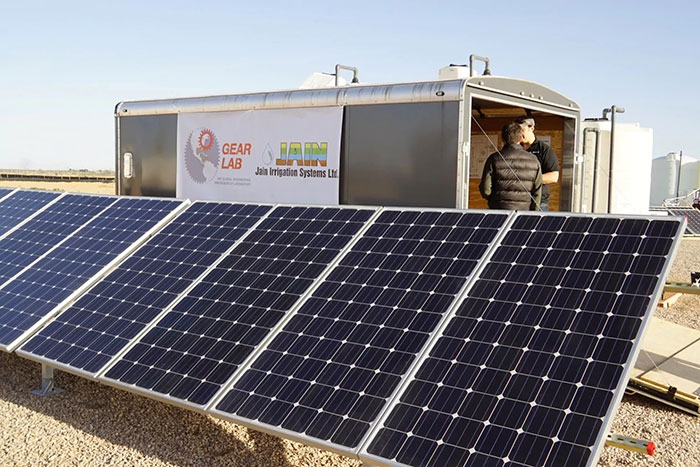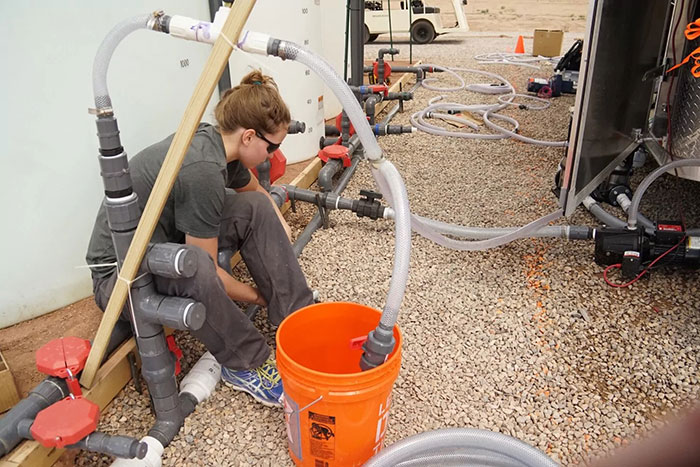
Research facts

Traditional desalination systems are expensive and require substantial amounts of electricity to operate, making them impractical for India’s remote farming communities. Instead, the MIT researchers designed a system that removes salt through a process called electrodialysis, using a series of electrodes and membranes to remove the salt. They added solar panels and batteries to run the pumps and charge the electrodes. Then, in a final step, they installed ultraviolet light arrays to kill any microbes remaining in the water.
The finished prototype is small enough to fit in a tractor-trailer and includes photovoltaic cells to supply the electricity. The system, when fully operational, can supply the basic water needs of a village of between 2,000 and 5,000 people, MIT officials said. Although the prototype was more expensive, Wright said the team is hopes to lower the costs of a village-sized unit to about $11,000.

Such a lower-power system is useful mainly for treating brackish water and not seawater, which contains far more salt. But the prototype now being tested could handle water that contains salt concentrations of up to 4,000 parts per million, meaning it would work in about 90 percent of India’s wells, Wright said. Seawater’s salt concentration averages about 35,000 parts per million.
“There are places where this kind of system won’t work, but the advantage is, it uses half the energy of other systems,” said Wright. And, thanks to solar cells, “you can be fully off the grid.”
——MIT engineer Natasha Wright